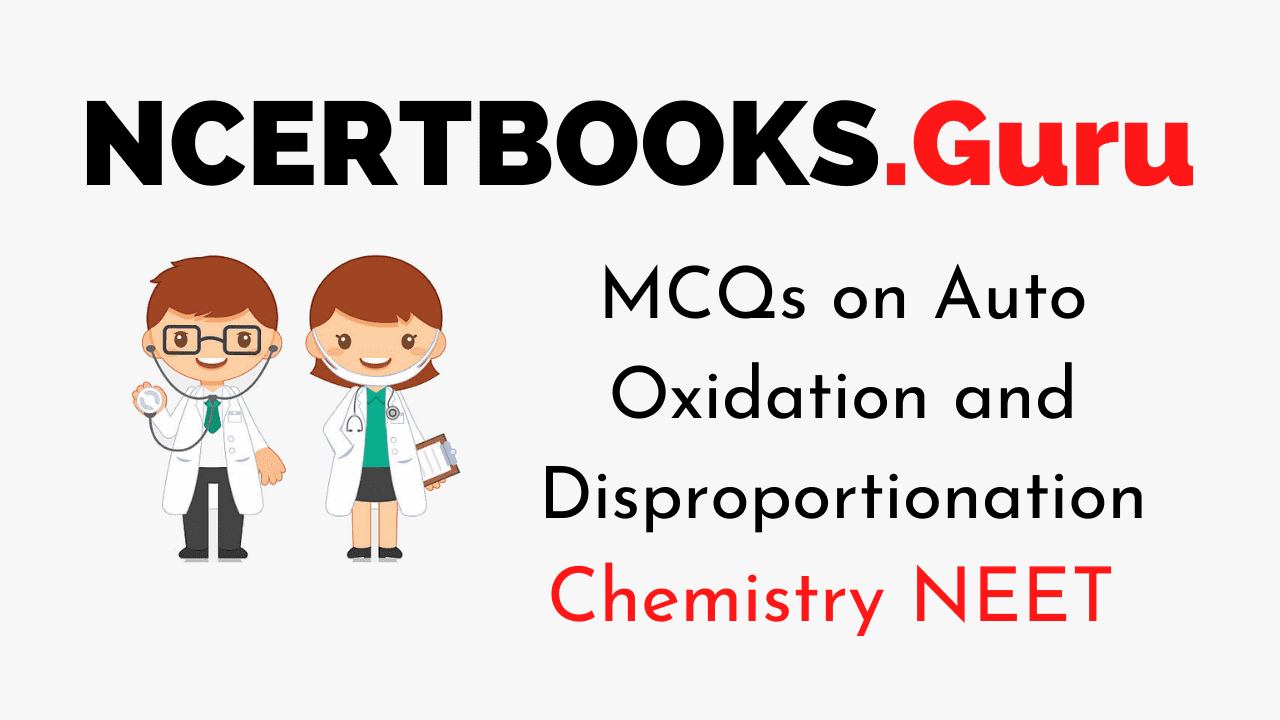NEET Chemistry is the scoring paper in the medical entrance examination. Here, you will discover the NEET Chemistry MCQ Questions for all Concepts as per the latest syllabus. Practice more on a regular basis with these NEET Chemistry objective questions on air pollution and improve your subject knowledge & problem-solving skills along with time management. NEET Chemistry Auto Oxidation and Disproportionation Multiple Choice Questions make you feel confident in answering the question in the exam & increases your scores to high.
MCQs on Auto Oxidation and Disproportionation
1. Which one of the following will not reduce an acidified solution of potassium dichromate (VI)?
(a) (CH3)2C(OH)CH3
(b) FeSO4
(c) CH3CH2CH(OH)CH3
(d) Zn
Answer
Answer: (a)
2. 25.4g of iodine and 14.2g of chlorine is made to react completely to yield a mixture of ICl and ICl3. Calculate the ratio of moles of ICl and ICl3
(a) 1:1
(b) 1:2
(c) 1:3
(d) 2:3
Answer
Answer: (a)
3. Which of the following has been arranged in order of decreasing average oxidation number of sulphur?
(a) H2S2O7 > Na2S4O6 > Na2S2O3 > S8
(b) SO2+ > SO42- > SO32- > HSO4–
(c) H2SO5 > H2SO3 > SCl2 > H2S
(d) H2SO4 > SO2 > H2S > H2S2O8
Answer
Answer: (c)
4. The decomposition of KClO3 to KCl and O2 on heating is an example of
(a) intermolecular redox change
(b) intramolecular redox change
(c) disproportionation or auto redox change
(d) none of these
Answer
Answer: (b)
5. Disproportionation means
(a) only oxidation
(b) only reduction
(c) both, oxidation and reduction of a reactant
(d) neither oxidation nor reduction
Answer
Answer: (c)
6. The compounds behaving both oxidizing, as well as a reducing agent, is
(a) H2O2
(b) SO2
(c) HNO2
(d) HNO3
Answer
Answer: (a,b,c)
7. A substance which can be oxidised as well as reduced easily is
(a) HCl
(b) HClO
(c) HClO3
(d) HClO4
Answer
Answer: (b,c)
8. Equivalent mass of oxidising agent in the reaction
SO2 + 2H2S → 3S + 2H2O
(a) 32
(b) 64
(c) 16
(d) 8
Answer
Answer: (c)
9. The oxidation number of iron in Fe3O4 is
(a) +2
(b) +3
(c) 8/3
(d) ⅔
Answer
Answer: (a,b)
10. Oxidation numbers of chlorine in Cl2O, Cl2 and ClO3– are respectively
(a) +1, -1, +5
(b) +1, 0, -1
(c) -1, 0, +1
(d) +1, 0, +5
Answer
Answer: (d)
